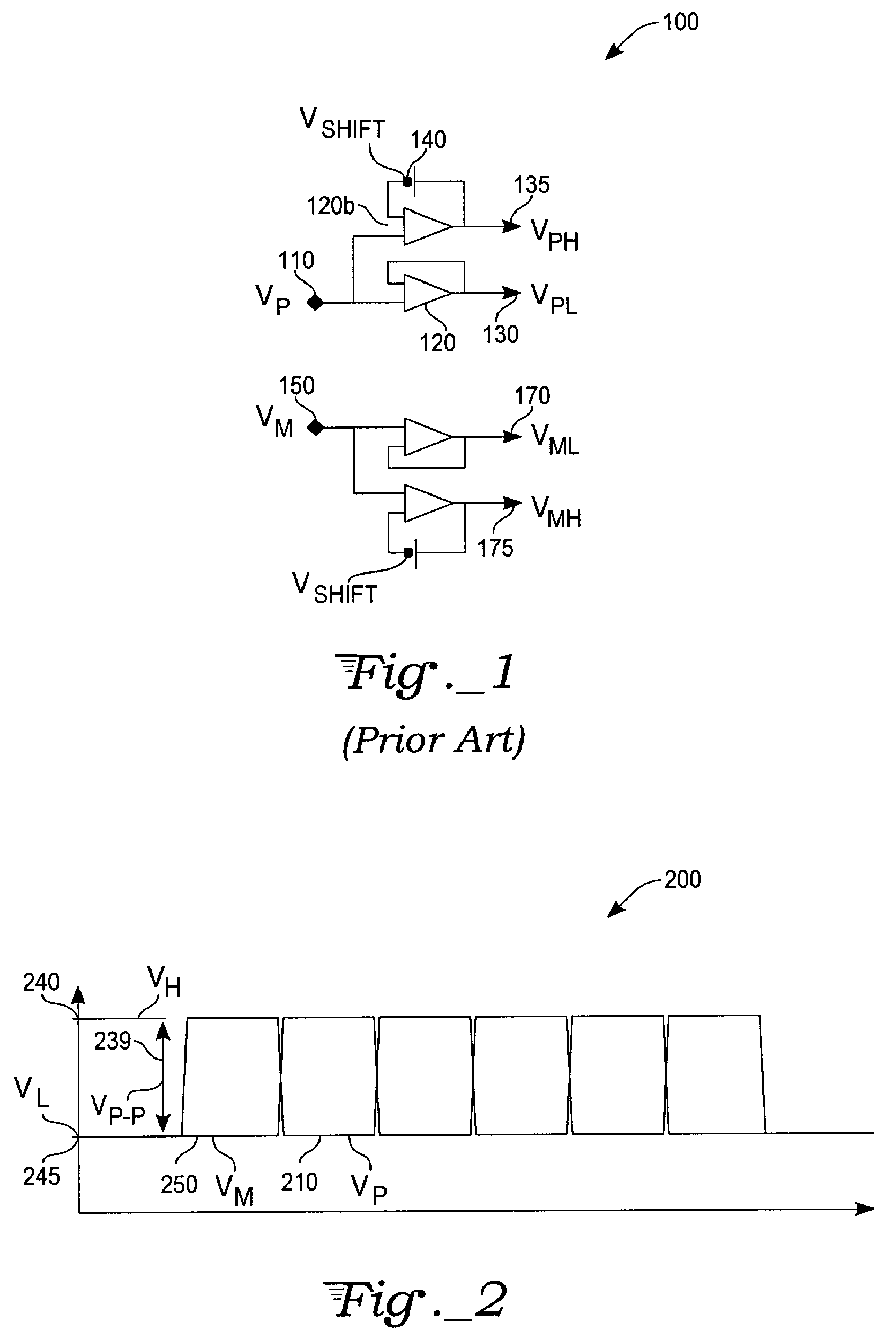Detector of differential threshold voltage
a detection circuit and threshold voltage technology, applied in the field of differential threshold voltage detection, can solve the problems of increasing the area of the integrated circuit, requiring increased power, and not responding significantly to identical changes in input pairs
- Summary
- Abstract
- Description
- Claims
- Application Information
AI Technical Summary
Benefits of technology
Problems solved by technology
Method used
Image
Examples
Embodiment Construction
[0026]With respect to FIG. 3, an exemplary embodiment of a front-end level shifter 300 includes a series coupling of a voltage generating PMOS transistor 355 and a current reference 360 between a positive power bus 305 and a negative power bus 320. The voltage generating PMOS transistor 355 and a current reference 360 form a current mirror producing a reference voltage at a voltage reference terminal 359.
[0027]A positive signal component of a complementary differential voltage pair is connected at a positive differential input 310 (VP) of a first differential input PMOS transistor 312. The first differential input PMOS transistor is coupled with a source terminal to a positive differential—low terminal 330 (VPL) and a drain terminal to the negative power bus 320. A first voltage shifting circuit 315 is coupled between the positive differential—low terminal 330 and a positive differential—high terminal 335 (VPH). The first voltage shifting circuit 315 contains a parallel connection o...
PUM
 Login to View More
Login to View More Abstract
Description
Claims
Application Information
 Login to View More
Login to View More - R&D
- Intellectual Property
- Life Sciences
- Materials
- Tech Scout
- Unparalleled Data Quality
- Higher Quality Content
- 60% Fewer Hallucinations
Browse by: Latest US Patents, China's latest patents, Technical Efficacy Thesaurus, Application Domain, Technology Topic, Popular Technical Reports.
© 2025 PatSnap. All rights reserved.Legal|Privacy policy|Modern Slavery Act Transparency Statement|Sitemap|About US| Contact US: help@patsnap.com



